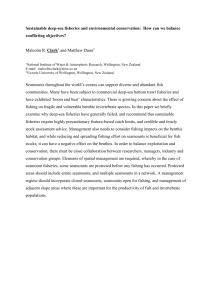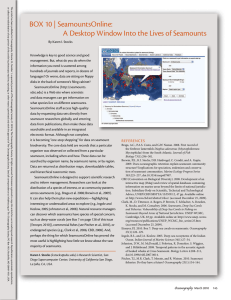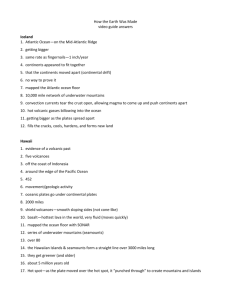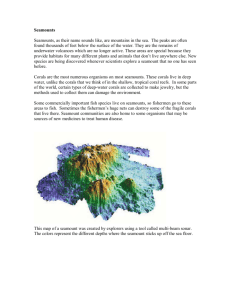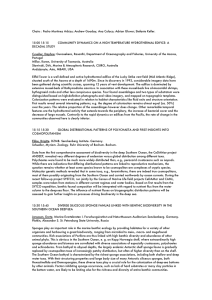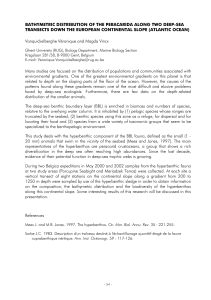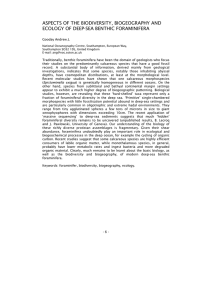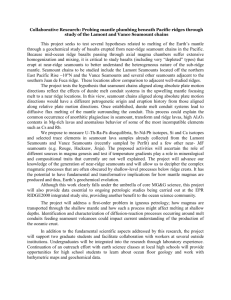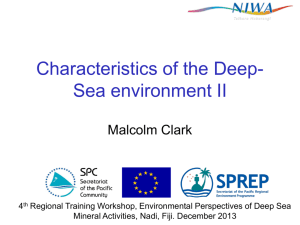Biogeographic Relationships and Spatial Scales of Connectivity
advertisement
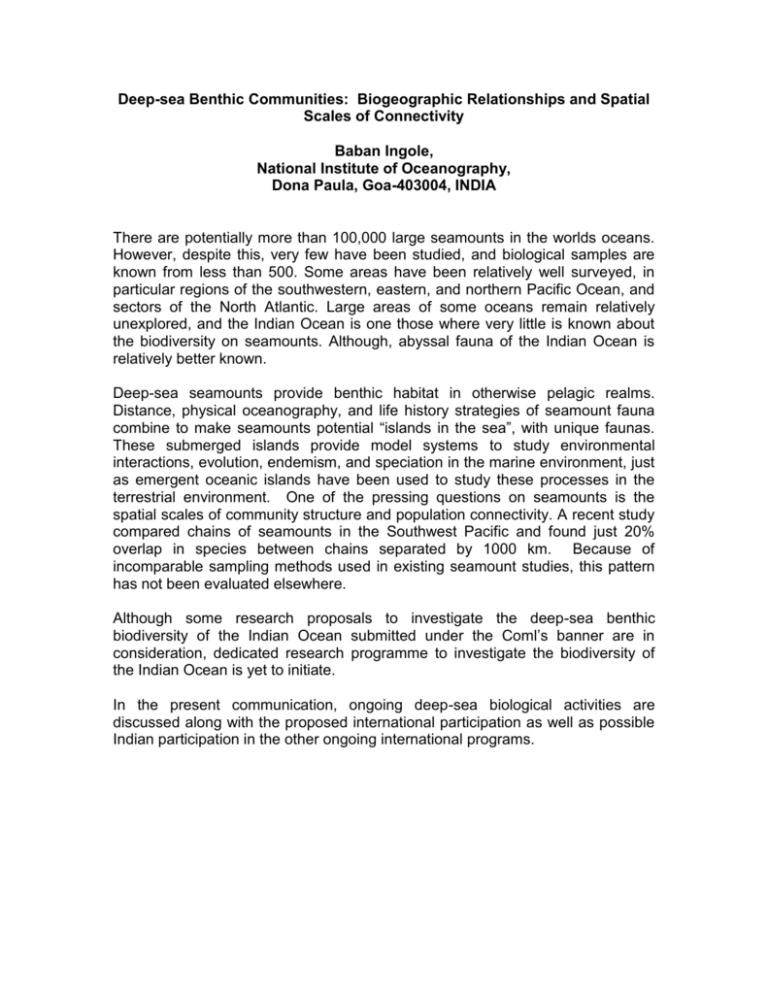
Deep-sea Benthic Communities: Biogeographic Relationships and Spatial Scales of Connectivity Baban Ingole, National Institute of Oceanography, Dona Paula, Goa-403004, INDIA There are potentially more than 100,000 large seamounts in the worlds oceans. However, despite this, very few have been studied, and biological samples are known from less than 500. Some areas have been relatively well surveyed, in particular regions of the southwestern, eastern, and northern Pacific Ocean, and sectors of the North Atlantic. Large areas of some oceans remain relatively unexplored, and the Indian Ocean is one those where very little is known about the biodiversity on seamounts. Although, abyssal fauna of the Indian Ocean is relatively better known. Deep-sea seamounts provide benthic habitat in otherwise pelagic realms. Distance, physical oceanography, and life history strategies of seamount fauna combine to make seamounts potential “islands in the sea”, with unique faunas. These submerged islands provide model systems to study environmental interactions, evolution, endemism, and speciation in the marine environment, just as emergent oceanic islands have been used to study these processes in the terrestrial environment. One of the pressing questions on seamounts is the spatial scales of community structure and population connectivity. A recent study compared chains of seamounts in the Southwest Pacific and found just 20% overlap in species between chains separated by 1000 km. Because of incomparable sampling methods used in existing seamount studies, this pattern has not been evaluated elsewhere. Although some research proposals to investigate the deep-sea benthic biodiversity of the Indian Ocean submitted under the Coml’s banner are in consideration, dedicated research programme to investigate the biodiversity of the Indian Ocean is yet to initiate. In the present communication, ongoing deep-sea biological activities are discussed along with the proposed international participation as well as possible Indian participation in the other ongoing international programs.
